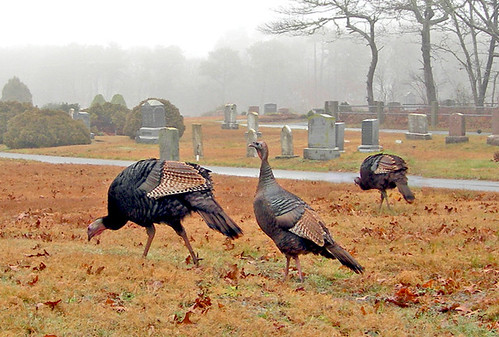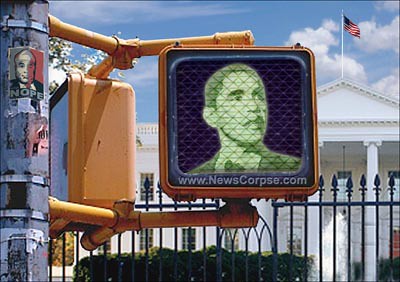[Image courtesy of Blue State Digital.]
Social media for fund raising? for organizing voters? for presidential brand building and marketing?
This series started with
Social Media, The Elections, What It Means For Marketing and
Social Media & The Elections: What It Means for Marketing - Part II. It continues with a look at social networks.
Have you heard about
MyBarackObama.com? I recently [yes...] learned about it at the Columbia Business School
Fall BRITE '08 event, during which
Thomas Gensemer from Blue State Digital presented "
Social Networking & Your Brand."
Thomas Gensemer is managing partner for Blue State Digital, a "
market research-New Media hybrid that has played an instrumental role in fostering Obamamania" - according to Business Week's
Obama's Secret Digital Weapon - and founded in 2004 by four members of Howard Dean's presidential campaign. "
He and his associates wanted to use such tools to mobilize grassroots support for progressive candidates, causes, or products. "The idea has always been to engage the citizenry, make them feel part of the process," Gensemer says."
 Interestingly, at the MarketingProfs Digital Mixer, Arianna Huffington stated that, without the Internet, Barack Obama would not have been successful "defeating the system." The Internet allowed him to effectively raise money online, translate viral messages to the street, and organize supporters on Facebook so they could call on unregistered voters door to door.
Interestingly, at the MarketingProfs Digital Mixer, Arianna Huffington stated that, without the Internet, Barack Obama would not have been successful "defeating the system." The Internet allowed him to effectively raise money online, translate viral messages to the street, and organize supporters on Facebook so they could call on unregistered voters door to door.
Given my new knowledge, I realize that she must have been referring to MyBarackObama.com.
However, MyBarackObama.com features several levels. According to Business Week, "One of Blue State's greatest contributions to the campaign has been MyBO, the social networking dimension of the candidate's Web site. MyBO allows Obama supporters to communicate directly with each other, organize their own events, and swap ideas. Obama staffers monitor the exchanges as a way to help them make their own communications with supporters as timely and personal as possible."
Very interesting.
Gensemer explained that MyBO [pronounced "my beau"] has 1.6m active profiles, 50k groups and circles, and over 250K user organized events. Overall, the social network has raised over $400m from 2.5m contributors. Impressive. [Definitely read the
Obama for America 2008 case study on Blue State Digital's website written earlier on in the campaign.]
Effective social networks include simple and low involvement thresholds that aren't barriers to entry. In other words, the basic interaction is so user-friendly that it welcomes and engages rather than repels and chases away. The calls to action are simple and engaging and the content, valuable.
An important societal trend is the rise of citizen-consumers [read
Citizen Consumers: towards a new marketing of politics by M. Scammell]. Not only do consumers all around have opportunity to engage online via social networks, but we also have a strong desire to do so.
Gensemer shared that:
+ 93% of Americans expect companies to have a social media presence
+ 85% expect companies to interact with them via social media
+ 2/3 or households making more than $75K feel a stronger connection to brands they interact with online.
The reasons for becoming engaged in social networks?
+
Self expression and ego [e.g., Amazon reviews and Wikipedia]
+
Utility [evites, flickr, Del.icio.us bookmarks]
+
Exhibitionism/voyeurism+
Reputation [e.g, LinkedIn]
+
Altruism [e.g., ACTblue, Angie's List, myBo]
And the reasons for a company to create a network?
Utility [e.g., YouTube, Craigslist, Yahoo Groups],
Loyalty [e.g., shared affinity like dating, campaigning...] or a
hybrid of the two.
What I find interesting is that, although I take part in many social networks, I don't think of them as such. Rather, I think of them in terms of what value I obtain from them. Is that true for you, too?
Gensemer brought up examples of what not to do. Why would
Cartier [look for Cartier Club] or
Mercedes [look for Owners Online] owners want to join a network? What is the value or shared affinity inherent to interacting with other jewelry or car owners? What call to action is there that is relevant to such a group?
On the other hand, Best Buy's employee site -
Blue Shirt Nation - was created by employees for employees to develop training, offer peer-support and improve employee to employee communications. It has been effective.
Another example is "We." Al gore created the
"We" campaign to solve the climate crisis. But, is it really working? It uses tools similar to those used by Obama and has gathered an email audience of 2 million. Despite having a leading voice on the issue, their social network is dead! The reason: "
without effective program development and ongoing support - events, legislating lobbying or affinity marketing - what are individual supporters supposed to organize around?" [See ClickZ's 4/21/08 article titled
Gore's "We" Campaign to Pack Digital Wallop.]
What about
Whole Foods, which - with physical stores, a loyal clientele and unifying activities - has a blog
Whole Story, but no social network. Why not?
BMW has created a presence on Facebook - Graffiti Car Contest. It's a purely marketing driven presence to encourage creativity and affect influentials. It does little else.
Gensemer's key lessons from all of this:
+ not all networks will be utilitarian; most won't
+ usually shared affinity is not enough
+ incentives and collective benefits are critical
+ low barrier "asks" and ongoing engagement tactics are necessary.
He also made the point that whatever you do offline must support online activities.
From the BSD case study, here's an interesting benefit of MyBarackObama.com: it made use of "
BSD’s innovative True Match technology, a gift-matching program that brings together new donors and their matching donors personally, so that they can meet, communicate, and reinforce one another’s commitment to their common cause." Talk about social donations.
Note: The Virtual Handshake Blog posted a
summary of all of the Fall Brite '08 presentations including this one.
Next: The marketing lessons associated with social media and the elections.
Technorati Tags:
Thomas Gensemer Blue State Digital MyBarackObama.com social networks citizen consumer social media BRITE'08 #MPDM Del.icio.us Tags:
Thomas Gensemer Blue State Digital MyBarackObama.com social networks citizen consumer social media BRITE'08 #MPDM
 Did you watch CNN? Did you catch the news?[NB: You still can through Sunday.] I'm so very excited to share that Liz McCartney, community crusader for the St. Bernard Project has been chosen as the CNN 2008 Hero of the Year! Hurray! Thank you to all who voted for her.
Did you watch CNN? Did you catch the news?[NB: You still can through Sunday.] I'm so very excited to share that Liz McCartney, community crusader for the St. Bernard Project has been chosen as the CNN 2008 Hero of the Year! Hurray! Thank you to all who voted for her.


 The results are in! Forrester has announced the
The results are in! Forrester has announced the 













